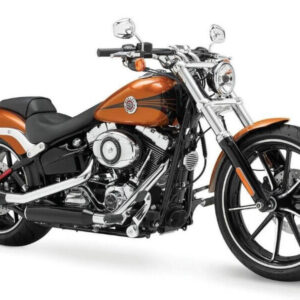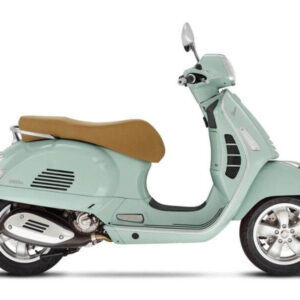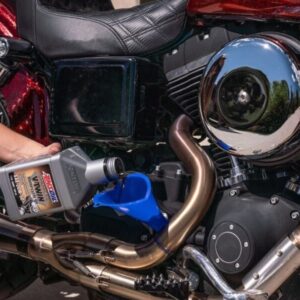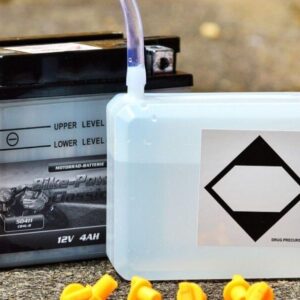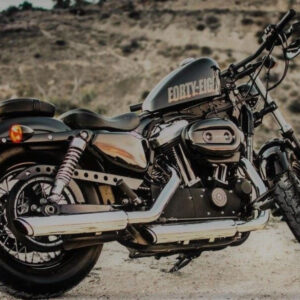What is a crate engine? To the uninitiated, modifying and building cars can seem little more than huge expensive Lego sets, but it couldn’t really be further from the truth. Unless you are rebuilding a car back to factory specifications with factory parts, it’s rarely a case of plug and play when it comes to parts of any sort.
Be it body panels, glass, or mechanical drivetrain components. When bringing a Craigslist barn find project back to life, or restoring a classic, the engine is likely the first thing you have to consider.
Depending on the engine choice, there are a myriad of engine options you can choose from, occasionally, as is the case with the Chevy Small Block, you can even find engine assemblies still made by General Motors, decades after it stopped producing the cars where it was original equipment. These engine assemblies are referred to as “crate engines.”
What Is a Crate Engine?
A crate engine is a fully assembled engine that is sold as a standalone product, and literally delivered in a crate. Used either to replace an existing power plant or as a performance upgrade for a muscle car or hotrod, crate engines are a key focus when embarking on a restoration of any kind.

For example, the Blueprint 302 Crate Engine is a long block crate that we install into many of our Classic Ford Bronco builds. They are perfectly prescribed for restomod projects where an old truck has been salvaged and needs a new lease of life, giving the efficiency and performance of a brand new automobile.
Who Makes Crate Engines?
Supplying the world with fully built, insanely powerful crate engines are America’s ‘big three’ automotive manufacturers – GM Performance, Mopar (Chrysler) and Ford Racing.
With 5 liter V8’s dominating the field, you can pick up a crate engine in a range of capacities and power levels to suit with prices ranging from $1,000 to over $50,000 depending on customizations and spec.
However, crate engines are not always brand new – it’s just as common to purchase these reconditioned or used, also labeled a crate engine. This may certainly suit you if you are on a tighter budget.
Here we cover a few of the important aspects one should consider when purchasing a crate engine, from the why to the how and what. So let’s jump right in.
Why Get A Crate Engine?
Every build is different. Sure, you want to extend the life of that old banger – it worked once, and let’s face it – they don’t make them quite like they used to! However sometimes it’s just easier and cheaper to buy new than overhaul the old.
Depending on how busted your engine is, the cost of reconditioning can quickly spiral. In many cases it’s going to be cheaper to go buy a new crate engine, assuring that every component is brand new and ready for the long haul.
On the other hand, if it’s a power upgrade you’re after, then all the more reason for going down the crate engine route. Many of the early Bronco’s shipped with a V8, but were understandably far less powerful than the V8’s of today. A 1979 Bronco pushed less than 160hp. Fast forward 40 years and a 2022 Gen 3 5.0L Coyote ships with three times the power.
Sure, there’s no comparison to the Bronco trademark gurgle of a straight piped 5.8L Ford 351M V8. It’s a headturner for sure, and man – it’s thirsty. But it’s a thing of beauty and we challenge you to not smile at the sound of one being opened up.
If the 351M has to stay on your passion project, maybe a reconditioned crate engine is the right way to go. But if power, price or reliability are on your to-do list, a new crate engine ticks all of those boxes.
Types Of Crate Engine
We’ve established that crate engines can be new build, reconditioned or used. Let’s dig into this a bit further.

New crate engine
A new crate engine ships straight from the factory or distributor. They’re as new as they come, comprising all new components fully tested and ready to hoist into your engine bay.
Shipped with a warranty and the reassurance that things are far less likely to go wrong, a new crate engine is recommended in most cases, and is always our go-to strategy when building on a Classic Ford Bronco.
The Ford Racing Coyote 5.0L is really the most important example of what you get with a crate. It’s been a huge success since its launch in 2011 and in ten years has even helped conceive an entirely new race category ‘Coyote Stock’.
As an affordable and thoroughly tested upgrade, the Coyote 5.0L is pushing enough power to keep everyone smiling, both racers and spectators alike. Whilst the teams competing for the finish line have nothing more than tuning prowess and driving technique to consider in trying to secure a win.
Beyond the Bronco, and stock car racing, Coyote crate engines are used in many other vehicles and have been mostly responsible for the mass market growth of the crate engine through their combination of cost, accessibility and reliability. To boot, they also happen to be leading the pack in terms of performance.
Reconditioned crate engine
The process of reconditioning applies to all manner of hardware, from vehicle engines to bicycles, even kitchen appliances and televisions.
An engineer or mechanic will strip the equipment down, clean all of the components, replacing or repairing where necessary, before reassembling and testing. Consequently, a reconditioned engine will likely have had quite an extensive bit of effort to get it running like new.
However, like a new engine they will come with a warranty and may even have been tested for quality and reliability by the original manufacturer to ensure things are running as they should. Who can balk at a new manufacturer’s warranty for something originally built 30 years earlier?
As you’d imagine though, given the additional work and the transformation from old to new, a pristine classic engine can be quite sought after, and with that can come extra cost.
We talked about the 1979 Bronco, and how nostalgia and purism can be the objective with a restoration – and if money isn’t the problem, for these owners a reconditioned engine is exactly the way to go as you’ll be able to drive the car in pretty much the same way as it was when it first rolled off the production line.
Rebuilt crate engine
Going right down the other end of the price ladder, rebuilt engines come into play – and these have often been previously working engines pulled out of a vehicle, potentially even swapped for another.
However, contrary to a recon where replacement and repair takes place, a rebuild may simply just involve the basic replacement of consumables like spark plugs, air filters, pipes, gaskets, an oil change and so forth. They are cleaned, tested and reassembled with the same or some new manufacturer sourced components.
It’ll work but unlike a reconditioned engine, the quality will vary from shop to shop. These engines aren’t usually put through quite the same pace of testing and quality control as a reconditioned power plant, and they’re unlikely to come with a warranty (unless you buy one) but if you pick the right shop you can get a rebuild that is just as good; race tuned and high performance.
Used crate engine
Last on the list is the good ol’ used engine, possibly running some high miles and possessing some kind of issue or fault. Again, depending on your source the engine quality will vary considerably.
Used engines are often pulled from insurance write offs and in many cases will be perfectly functional. They can also be swapped out having developed some kind of fault, but will still turn over, thus it runs and so still carries the price tag for a ‘working engine’.
So much like when sourcing a used car, sourcing from a reputable source is just as important when buying a used engine. Sure, you’ll like the price – used engines will be the cheapest way to go, but you’re not going to get any warranty or evidence of testing.
You might even be getting a non-runner, and if it does work who knows where you’ll be in twelve months time when things really start to go wrong – and that’s where you’ll be wishing you’d just dug a little deeper and gone with the new crate engine you’d first set your heart on.
How To Select The Right Crate Engine?
Depending on the kind of restoration project you’re embarking on will determine how you go about things, and which crate engine you opt for.

We’re a little biased. We drop a Gen 3 Coyote 5.0L into all our builds, but everyone is different. If it’s a purist restoration and you’ve got your heart set on that 351M V8, you’re not going to get that new.
You’ll need to locate somewhere that is selling one as a crate, and decide if it’s a rebuild or recondition you’re after. You might find another vehicle and purchase for scrap, pulling out the engine and ignoring the rest. However, choice will be limited and as time goes on those older engines get even harder to source.
Things get more interesting when you enter the restored world – and if performance is key, it’s likely to be a new block you’ll need as opposed to something from yesteryear – this is the trustworthy choice, and they’ll perform better and be way more efficient.
Before you go shopping, it’s worth weighing up a few things. Here we cover the essentials like size, performance and what you get.
Size up your engine bay
First and foremost, it’s never just a case of choosing an engine and trying to make it fit. Yes, size does matter! The engine bay for one auto model will be different from another. Even similarly aged and sized cars of the same style can vary significantly by way of what has been sat under the hood.
Things could get more tricky If you’re chasing power gains and are coming from a small block OHV engine with aspirations to fit a big block OHC engine. The difference in size will be significant. An OHV engine has a camshaft buried away in the block, and uses pushrod lifters with rocker arms to operate the valves thereby taking up some of that empty space between the pistons.
A lot of older American cars fitted this type of engine, but they do tend to be a lot smaller than OHC engines which are more spread out.
The old adage of ‘measure twice cut once’ could not be more appropriate here. Once you hand over your hard earned dollars it might not be so easy getting them back if you’ve simply screwed up with the tape measure.
Brand
Testament to the Coyote 5.0 engine, the growth in demand for crate engines has meant that over the years lots of other manufacturers have developed crate offerings – so there is plenty to choose from.
Outside the big 3 of Ford, GM and Chrysler, there are many manufacturers to consider, big and small alike. Honda has crate engine offerings.
Lots of lesser known shops pushing out incredibly high quality engines like Katech, Racecast and HKS may also spark your interest. There is nothing stopping you from exploring any combo, but it must be said that the best strategy might well be to stay on-brand.
Coyote engine swaps are commonplace amongst Ford owners for this reason – the Coyote engine was built specifically for the Ford Mustang but with mainstream production in mind you’ll see the Coyote being fitted into plenty of other vehicles. Just look at how many of our client’s choose to go the Coyote Series route!
When Buying A Crate Engine, What Do You Get?
Crate engines are available at all levels and spec, but typically fall into one of three categories – short block, long block and turn-key. It would be easy to assume that a crate engine will be built ready to run, but unless you’re going the full turn-key route, this is absolutely not the case.
Short-block
Here you’re getting the bare bones – so that’s the engine block with crankshaft and pistons (plus rods and rings), bearings, seals and possibly also a camshaft – but absent of cylinder head and other valvetrain parts.
Long-block
This goes a few steps further with the short-block as-is, but also built with camshaft, valvetrain and possibly the exhaust manifold, but this will vary depending on which manufacturer you’ve gone for, and whether it’s an optional selection for your build.
Turn-Key
More often available direct from the manufacturer, but also from one of the many specialist shops out there building to order. That latter of which will give you far more headroom by way of how far you can customize your build. It’s also, unsurprisingly, the most expensive route.

Typically you’d be getting a fully built engine that will be as close to operational as is possible – that means getting something with an exhaust manifold, carburetor, water pump, all plugs, drives, wiring and any accessories – but this would be all down to spec and agreed at point of order.
For this reason, it’s worth also understanding what doesn’t come with it. There might be parts you need to budget on top and things can quickly add up, but the turn-key route is about as ready as they come.
Performance And Cost
It’s easy when faced with a blank canvas of a build to just go big and grab the most powerful and loud engine available. Sure, you’ll turn some heads but it’s going to cost you – those bigger engines won’t run with insufficient drivetrain components, and the overall weight and balance of the vehicle will also change – all of this needs to be accounted for and designed into your build.
Consequently, with so many additional upgrades it’s going to cost more. Like your Mom tried to drum into you as a kid for when you’ve set your heart on an investment of some kind, now is the time to set a budget for your project. The options are endless.
Not only can you drop $40,000 on your engine, but accessory parts specific to the engine of your choice may begin to tick the cost of your project quickly. Even the paint job could easily set you back another $15,000. The numbers start to become quite big, and before you know it you’re pushing well into six figures – and that’s without labor.
By setting out with a budget in mind, and carefully tracking against it you’ll be able to mitigate overspend. The engine will certainly be one of, if not the biggest outlay, so get your numbers right, factor in some overspend contingent, and you can hopefully avoid any painful and drawn out experiences.
What Else Will You Need For A Crate Engine Swap?
It’s never just a case of ordering your engine and fitting it in an afternoon. Sure, dropping in the block and bolting it in can be done by most competent mechanics in just a few hours, but that’s only the start of it.
Additional parts
You need to consider all of the additional parts you’ll need to buy to get your vehicle road worthy. Such as: the all important starter motor and radiator, hoses, clamps, pulleys, even oil filters and coolant will add notable cost to the list.
It’s worth narrowing everything down from the start to not only plan your budget but to ensure the build goes as smoothly and quickly as possible. It might make sense to purchase these components from your engine supplier to benefit from any buyer protection or bulk spend discount.
Transit and storage
We’re not talking about Amazon where everything packages down into a box and is UPS’d straight to your backyard. Engines are heavy pieces of machinery and weigh hundreds of pounds – and then some.

You’ll need specialist equipment, and suitable workshop facilities to accommodate your engine and vehicle both until you’re ready to install, and during the install. If you’re lucky enough to have your own shop, or have a professional on-hand to undertake the work, then that will save you some stress with delivery and storage.
But if it’s a home project you’ll need some kind of lift, hoist or cradle to move the engine from the crate (and it’s quite possibly just sat on the sidewalk if the typical courier service is anything to go by) but you’ll also need to both remove and move the old engine, and then move, lift and lower your new engine into place.
The Crate Engine Install
Don’t underestimate the amount of work required in fitting a new crate engine to your vehicle. There’s a reason why mechanics and specialist restomod shops exist. The process takes time and an incredible amount of expertise and knowledge to ensure your build goes smooth.
It’s not for the faint of heart, and cannot be done by a rookie with a manual and a few tools found in the garage. If you’ve done it before, sure go for it. You’re one of us.
Though if not, we’d absolutely urge you to find a professional to do the work for you – even the cost of buying the tools you need will set you back thousands. Unless you’ve fitted an engine before, or intimately know your way around one, it’s a minefield and will cause you pain like nothing else you’ve ever known.
That said, a properly executed install with professional tuning and testing will do nothing short of delight you for years to come. You’re breathing new life into your old classic and that’s something to be real proud of.
FAQs
What is the difference between a crate engine and a regular engine?
All parts in remanufactured engines are first inspected and only replaced if they do not meet quality standards. Otherwise, they are cleaned up and reused. On the other hand, most crate engines are built with custom components that increase horsepower and torque over stock engine specifications.
What makes it a crate engine?
A crate engine is a fully assembled engine that is sold as a standalone product, and literally delivered in a crate. Used either to replace an existing power plant or as a performance upgrade for a muscle car or hotrod, crate engines are a key focus when embarking on a restoration of any kind.
Are crate engines any good?
Today’s crate engines are reliable and easy to install. Forget the old days of running to the machine shop to get or even make a part. Plus, there’s no more need for trial and error engine experiments that more often than not blew up in your face, and took your bank balance along with it.
Above is information about What is a crate engine? that we have compiled. Hopefully, through the above content, you have a more detailed understanding of Types of crate engine. Thank you for reading our post.

